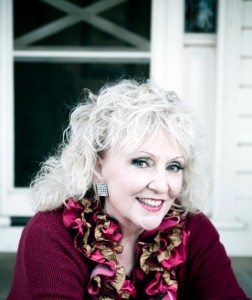 Carmel Bird on writing ‘Hare’
Carmel Bird on writing ‘Hare’
I live in Castlemaine which is a small country town in the centre of Victoria. The earth in this part of the world is scarred by the workings and remains of old goldmines, and the streets of the town lead, not to more streets, but to the edge of the forlorn and haunted bushland. Silent, mournful, mysterious forest is never far away. In the town, in all the little towns around here, and sometimes alone in the forest itself, nineteenth century churches, firm and handsome, survive in warm redbrick confidence.
When Angela Meyer asked for a story for The Great Unknown, it was these churches, with their promise of the ancient supernatural contained, that first presented themselves to me as inspiration. But—as I was beginning—a friend told me that twice on her daily walk in the local bush she had encountered a strange rabbit at dusk. It stood still and looked at her, and she thought it was going to speak. Saving the churches for another day, I was up and running.
Dusk, when the light is unstable, when shadows shift and things are not what they seem. Or are what they seem, and what they seem is eerie and threatening. When the corner of the eye offers the clue to mysteries as yet unthought. The rabbit was from a twilight zone, that nowhere place into which a boy could roll through the bedroom wall, never to return.
At the time when I was writing the story, the case of Jill Meagher was often in the news. Jill Meagher who disappeared in the city and whose body was later found buried in the bush on the outskirts of the country town of Gisborne. Whenever I drove through Gisborne, in fact whenever I drive through Gisborne, whenever I hear the name Gisborne, I think of the horrible story of Jill Meagher. The woman in ‘Hare’ owes something to that story. Of course, burying a body in the bush is nothing new, but I am examining here, insofar as I can, the workings of my imagination as I wrote ‘Hare’.
The rabbit suggested to me the hare—the rabbit in my friend’s story shifted easily into a hare. The hare as pyschopomp, the hare as trickster, has always fascinated me. I paused in my writing and wallowed for a while in my books on the subject, and in the story you will find some of the details of this dallying.
Once I have these ingredients—the hare, the old goldmines, the disappearance of the woman—the characters and their problems seem to appear of their own will. I more or less have the idea of the story, and now I need the angle. What is the hare up to, and how does the goldmine figure?
Let’s go back to reality for a minute. Something you can rely on in this p art of the world is the art exhibition. And two other things are cars up on blocks, and guns.
art of the world is the art exhibition. And two other things are cars up on blocks, and guns.
Put all these elements together, and the only thing remaining to do is to tell the story. For there are two parts to any story—there’s the story, and there’s the telling. How stories are written is a bit of another great unknown.
Buy The Great Unknown from your local bookshop or online.
